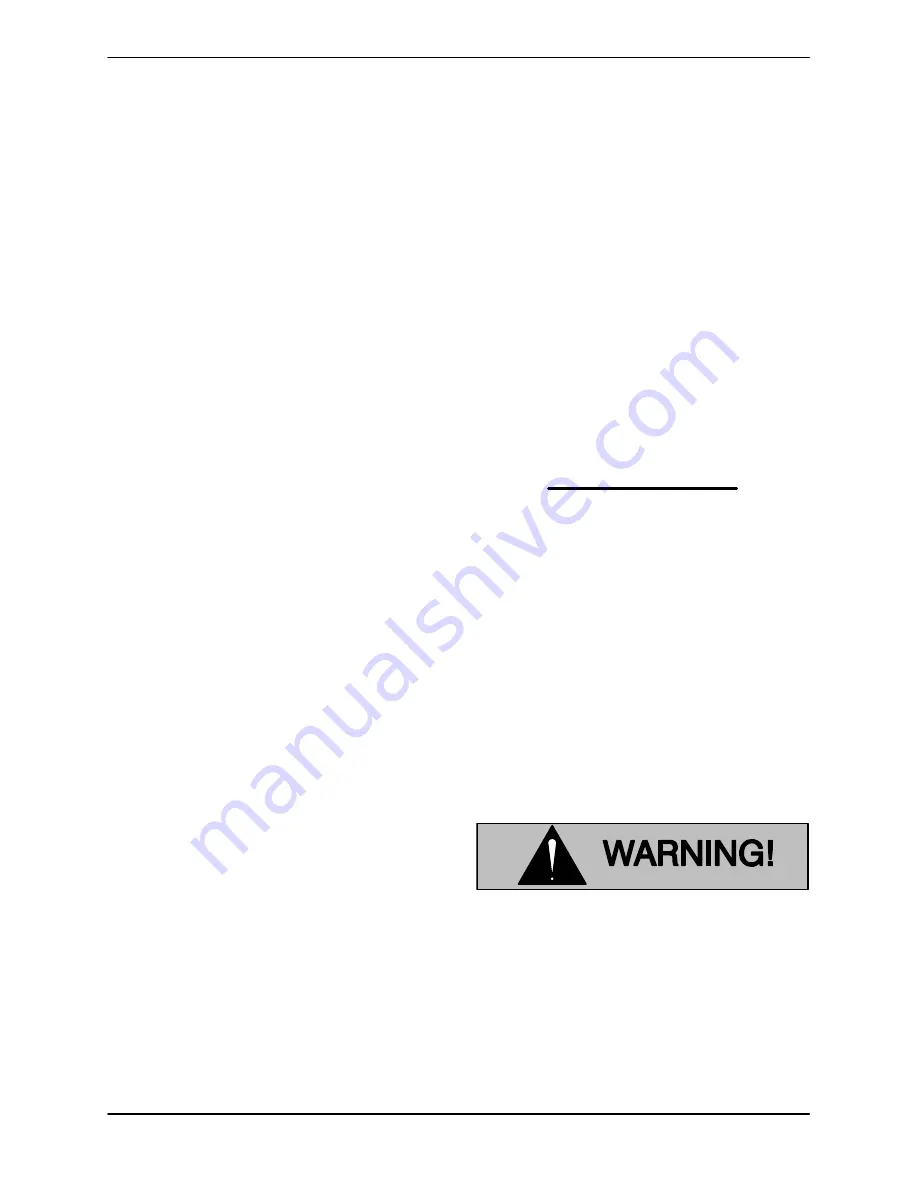
OM−00852
80 SERIES
MAINTENANCE & REPAIR
PAGE E − 7
Remove the hardware (28 and 29) securing the
check valve weights (30 and 32) to the check valve
gasket (31).
If no further disassembly is required, see
Suction
Check Valve Installation
.
Pump Casing Removal
(Figure 1)
To service the impeller or seal assembly, discon-
nect the discharge piping. Remove the hardware
(23, 24, 25 and 26) securing the pump casing (1) to
the rollover base (22).
(Figure 2)
Remove the nuts (13) securing the pump casing
(1) to the intermediate bracket (11). Separate the
parts by pulling the casing straight away from the
intermediate. If shims have been used under the
mounting feet to level the pump casing, tie and tag
these shims.
Remove the casing gasket set (10). Record the
thickness of the gaskets for future reference. Clean
the mating surfaces of the intermediate and pump
casing.
Inspect the wear plate (19) and replace if badly
scored or worn. To remove the wear plate, disen-
gage the hardware (21, 22, 27 and 28) and pull the
wear plate from the pump casing.
Impeller Removal
(Figure 2)
To loosen the impeller (2), tap the vanes of the im-
peller in a counterclockwise direction (when facing
the impeller) with a block of wood or a soft-faced
mallet. Unscrew the impeller and replace it if
cracked or badly worn. Use caution when remov-
ing the impeller; tension on the seal spring will be
released as the impeller is unscrewed.
Slide the impeller adjusting shims (16) off the im-
peller shaft. Tie and tag the shims or measure and
record their thickness for ease of reassembly.
Seal Removal and Disassembly
(Figure 2 and 3)
Carefully remove the spring seat (15) and seal
spring. Slide the shaft sleeve (14) and rotating por-
tion of the seal off the engine shaft. Apply oil to the
sleeve and work it up under the bellows. Slide the
rotating portion of the seal off the sleeve.
Slide a pair of stiff wires with hooked ends along
the shaft and use them to pull the stationary seat
from the intermediate bore.
NOTE
An alternate method of removing the stationary seat
is to remove the hardware (17 and 18) and separate
the intermediate (11) from the engine. Use a wood-
en dowel or other suitable tool to press the station-
ary seat from the intermediate bore.
If no further disassembly is required, see
Seal
Reassembly and Installation
.
Seal Reassembly and Installation
(Figures 2 and 3)
Inspect the engine crankshaft for damage. Small
scratches or nicks may be removed with a fine file
or emery cloth. If excessive wear exists, the shaft
will have to be replaced in the engine. (Refer to the
engine service manual).
Clean the seal cavity and shaft with a cloth soaked
in fresh cleaning solvent.
Most cleaning solvents are toxic and
flammable. Use them only in a well ven-
tilated area free from excessive heat,
sparks, and flame. Read and follow all
precautions printed on solvent contain-
ers.
The seal is not normally reused because wear pat-
terns on the finished faces cannot be realigned
during reassembly. This could result in premature
failure. If necessary to reuse an old seal in an emer-



















